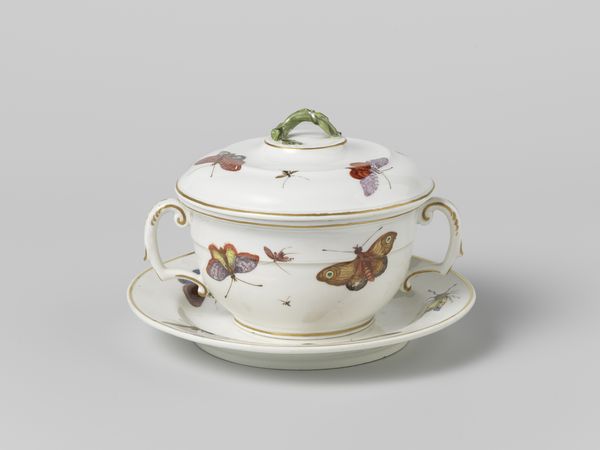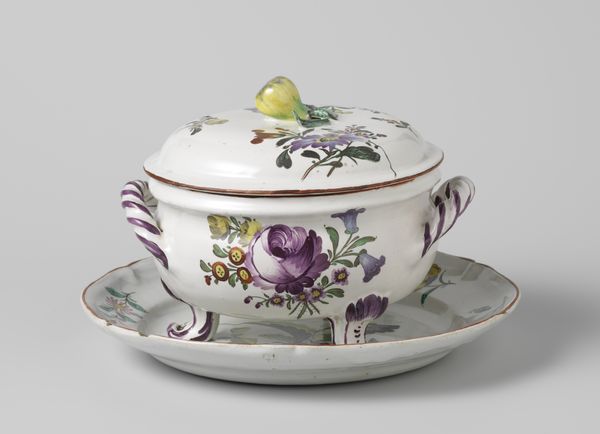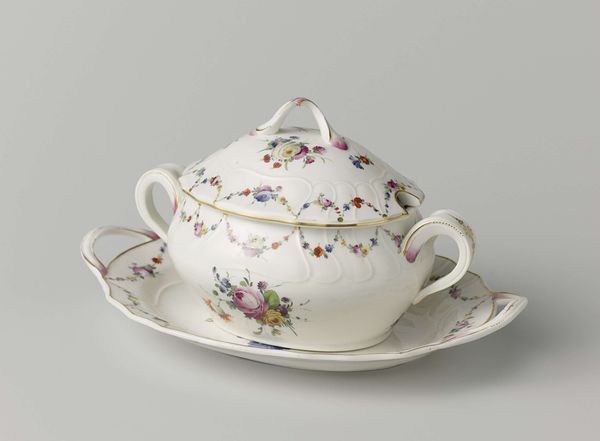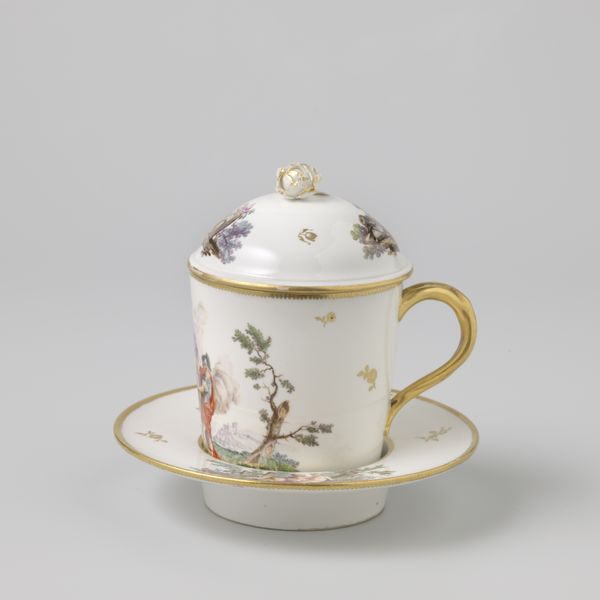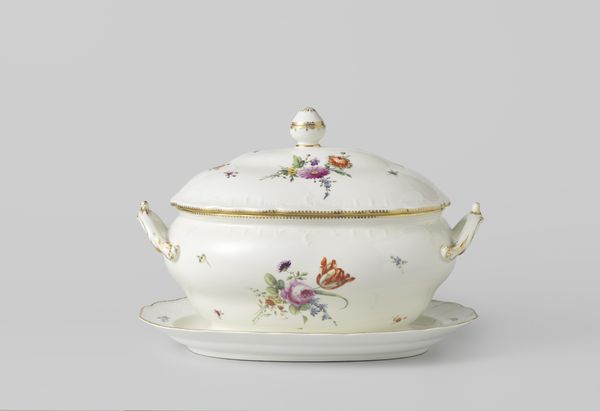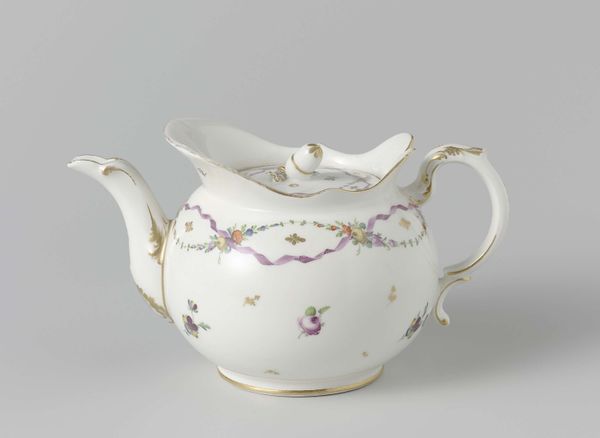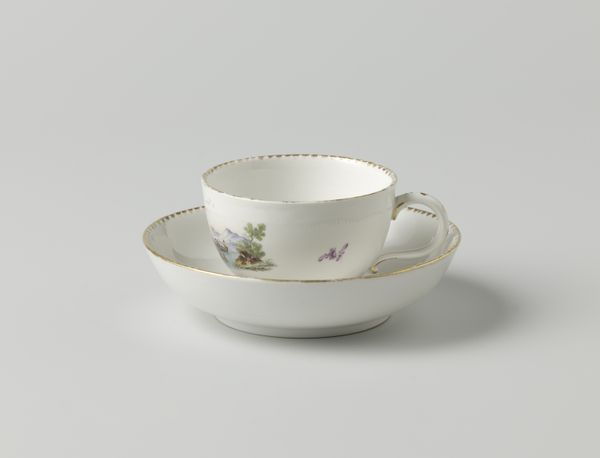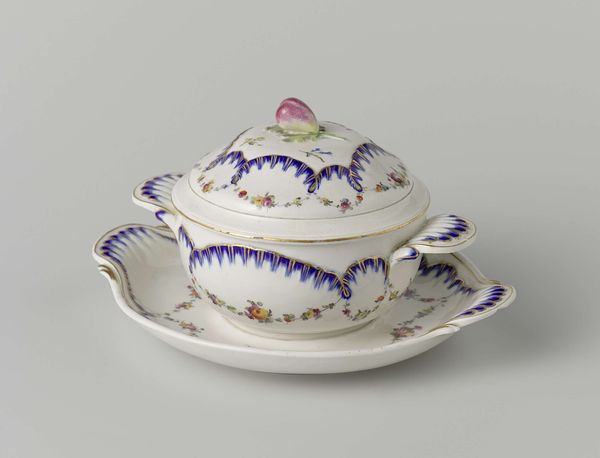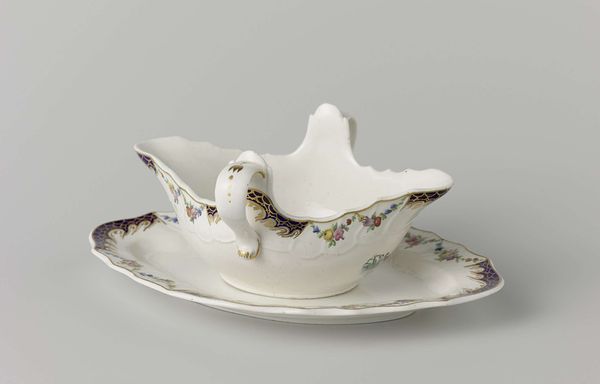
Terrine met onderschotel, beschilderd met vlinders en insecten c. 1778 - 1782
0:00
0:00
Dimensions: height 6.5 cm, diameter 12.1 cm, diameter 16.3 cm
Copyright: Rijks Museum: Open Domain
Curator: Well, isn’t this charming! I must say, it's lighter and more whimsical than I expected. Editor: Yes, this "Terrine with saucer, painted with butterflies and insects" from Loosdrecht, dating from about 1778-1782, is a particularly fine example of decorative earthenware. It really epitomizes the Rococo style. Curator: The insects! I’m immediately drawn to the decision to feature insects rather than, say, flowers or birds. Butterflies of course carry all kinds of connotations of transformation and the soul. But flies? Why flies, do you think? Editor: Flies alongside butterflies do create a fascinating juxtaposition. They were trending in Rococo decorative arts at the time, even on porcelain and furniture, echoing scientific illustration of the era. Representing insects served to underline human dominion over nature in this cultural and sociopolitical context. Curator: I think there’s also the sheer detail. The artist took real care to show the variety within these insect forms, and the very fact of representing them with scientific accuracy has deeper ties to the shift in the perception of nature. Even a humble insect carries spiritual weight. Editor: I think so too, the decorative programs of the era aimed at social distinction were often about displays of wealth and the luxury of detailed execution on expensive materials. Curator: This reminds me of Dutch still life paintings from the 17th century, which used insects to symbolize mortality. But here, in the Rococo era, that message feels muted, almost playful. It feels light. Editor: Yes, it is. And given that pieces such as this one found a place in private cabinets, often designed as fashionable displays, the element of pleasure seeking must have carried more weight than solemn thoughts about death. Curator: That’s a fantastic point! Perhaps the insects were more about celebrating the abundance of nature than fearing its transience. Food for thought, indeed. Editor: Absolutely, looking at how this lovely earthenware terrine would have been used and displayed helps us to uncover fascinating meanings behind such delicate designs.
Comments
No comments
Be the first to comment and join the conversation on the ultimate creative platform.
